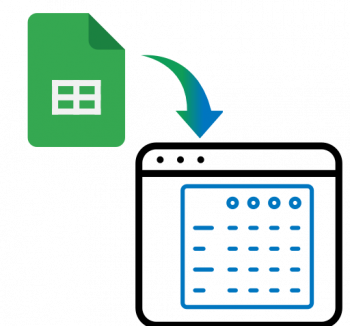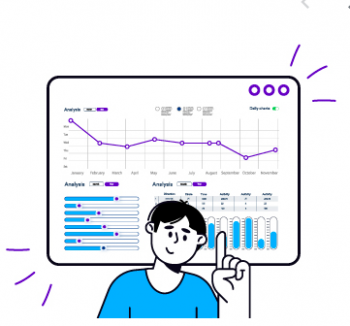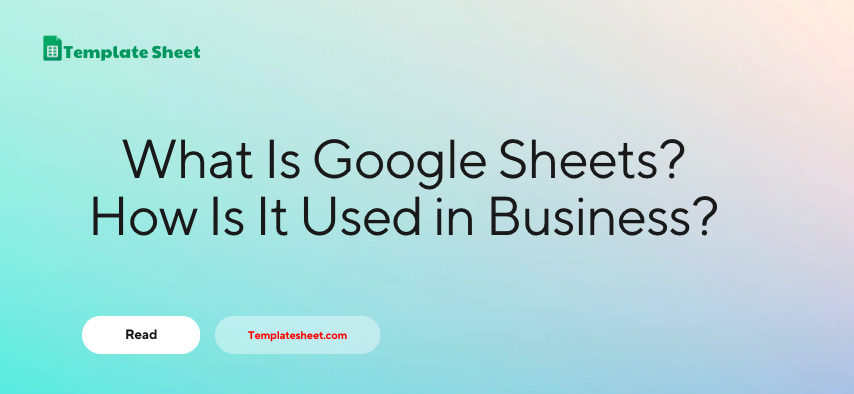What Is Google Sheets?
Google Sheets is a platform provided by Google. It is an online spreadsheet editing tool. To begin understanding Google Sheets, the first thing you need is:
- A Gmail account, which you can sign up for here: Link
- Access Google Sheets at the following link: Google Sheets Link

Google Sheets: Working Anywhere, on Any Device
If you’ve worked with Microsoft Excel before, you’ll find Google Sheets quite familiar. Let’s explore the outstanding features of Google Sheets:
- Work Anywhere: Access and edit spreadsheets from anywhere with an internet connection and on any device.
- Seamless Integration: Effortlessly connect with other Google ecosystem applications like Gmail, Google Forms, Google Meet, Google Calendar, and more.
- Direct Excel Editing: Edit Excel data directly when uploaded to the Google Sheets platform.
- Smart Suggestions: Receive intelligent suggestions when working with data and creating visual charts.
- Collaboration: Enable all members within your organization/company to access and collaborate on spreadsheets.
- Permissions: Effective permission management for editing, viewing, commenting, downloading, and copying data.
- Real-Time Data: Always work with the most up-to-date data.
- BigQuery Integration: Utilize Google Sheets to analyze massive datasets in BigQuery without the need for coding.
- Security: Maintain security and compliance with Google’s privacy policies.
With these standout features in mind, let’s delve deeper into how Google Sheets benefits businesses. In this article, we will explore various departmental applications to demonstrate that with the right knowledge of Google Sheets, it can serve as a comprehensive, versatile business management system, albeit on a smaller scale. The key is the ability to customize, fine-tune, and access data quickly. However, achieving this requires a strong understanding of Google Sheets.
Marketing Department
Imagine you are planning your goals for 2023, and you need to break them down into smaller objectives, such as quarterly, monthly, and weekly targets, or even for specific campaigns within the larger strategy. As a manager, you need to track and measure these data points to make informed decisions. This is where Google Sheets can assist you:
- Set up a goal planning spreadsheet for 2023 and objectives for each quarter, month, and week.
- Allocate objectives to individual team members responsible for various channels and input actual data as campaigns are executed.
- Create predefined formulas that calculate key metrics based on the data input after campaign runs, enabling you to track and measure performance.
- Establish basic reports, including Campaigns, Reach, Lead Generation, Budget, and the cost per successful customer acquisition.
Google Sheets provides the flexibility and functionality you need to effectively manage and analyze your marketing goals and campaigns throughout the year.
Sales Department
The Sales Department is responsible for customer interactions over the phone and setting up initial meetings. Therefore, it’s crucial to have a well-organized system to store comprehensive customer information to create a complete customer profile. Additionally, establishing structured customer care processes is essential to progress towards closing deals with customers. All these activities can be efficiently managed using Google Sheets by setting up systems for:
- Employee Management: Managing staff from top management to department heads, team leaders, and full-time or part-time employees.
- KPI Management: Tracking Key Performance Indicators (KPIs) for individual employees, teams, departments, and top management.
- Customer Relationship Management: Storing and managing customer relationships and interactions.
- Inventory Management: Keeping track of inventory levels.
- Order Management: Managing customer orders.
- Quotation Management: Handling price quotes.
- Contract Management: Managing contracts with customers.
- Revenue Management: Tracking sales figures, revenue, and outstanding payments.
- Business Activity Forecasting: Predicting future business outcomes.
- Comprehensive Reporting: Providing an overview of conversion metrics related to customers and orders.
Google Sheets offers the flexibility and capabilities required to efficiently handle and monitor various aspects of the sales process while ensuring customer satisfaction and successful deal closures.
Human Resources Department
There’s a lot of talk about the alignment of personnel with the organization’s goals, but the effectiveness can be measured through various reporting metrics. With Google Sheets, you can establish efficient processes related to recruitment and human resource management. Let’s take a look:
Recruitment System
- Recruitment Specialist List: Managing a list of recruitment specialists.
- Online Candidate Profile Storage: Storing candidate profiles online.
- Cost Management by Source: Tracking recruitment costs by source or channel.
- Setting and Managing KPIs: Establishing and managing Key Performance Indicators (KPIs) for the HR department based on recruitment campaigns or positions.
- Recruitment Process Setup: Creating and managing recruitment workflows.
- Interview Schedule and Tracking: Managing and monitoring interview schedules with candidates.
- Email Communications: Setting up and sending emails to candidates.
- Recruitment System Reporting: Generating reports on the recruitment system.
Google Sheets allows you to efficiently manage the recruitment and human resource processes, ensuring that your organization is staffed with the right individuals and tracking the relevant metrics for evaluation.
Human Resource Profile Management
Efficiently managing soft data files of employees from the time they join the company until they leave involves several HR tasks. With Google Sheets, you can streamline these processes:
- Employee Data File Management: Keeping track of employee information throughout their tenure with the company.
- Candidate Profile Storage: Organizing and storing candidate profiles based on different stages of the recruitment process.
- Attendance and Payroll: Managing attendance records, calculating salaries, and generating payroll documents.
- Leave Management: Keeping track of employee leave requests and balances.
- Probationary and Contract End Date Tracking: Managing and monitoring probationary periods and contract expiration dates.
- HR Email System: Setting up an email system for HR-related activities, including sending contracts, notifications, and decisions.
- Automated Birthday Wishes and Notifications: Automating birthday greetings and other notifications.
- Information Retrieval: Enabling quick information retrieval from the Human Resource Profile Management system.
Google Sheets provides a versatile platform for managing all aspects of human resource information, ensuring accurate records and efficient HR processes.
Here is a common list of areas where Google Sheets can be deployed, as it can help with flexible tracking, management, and adjustments for campaigns, plans, and personnel…
Let me recap a bit. With Google Sheets, you can establish a comprehensive system for:
- Task Management using Google Sheets
- Project Management using Google Sheets
- Customer Relationship Management (CRM) using Google Sheets
- Quotation Management using Google Sheets
- Recruitment Management using Google Sheets
- Human Resource Profile Management using Google Sheets




Leave a Reply